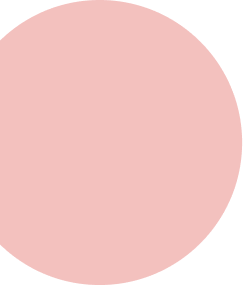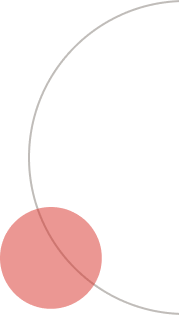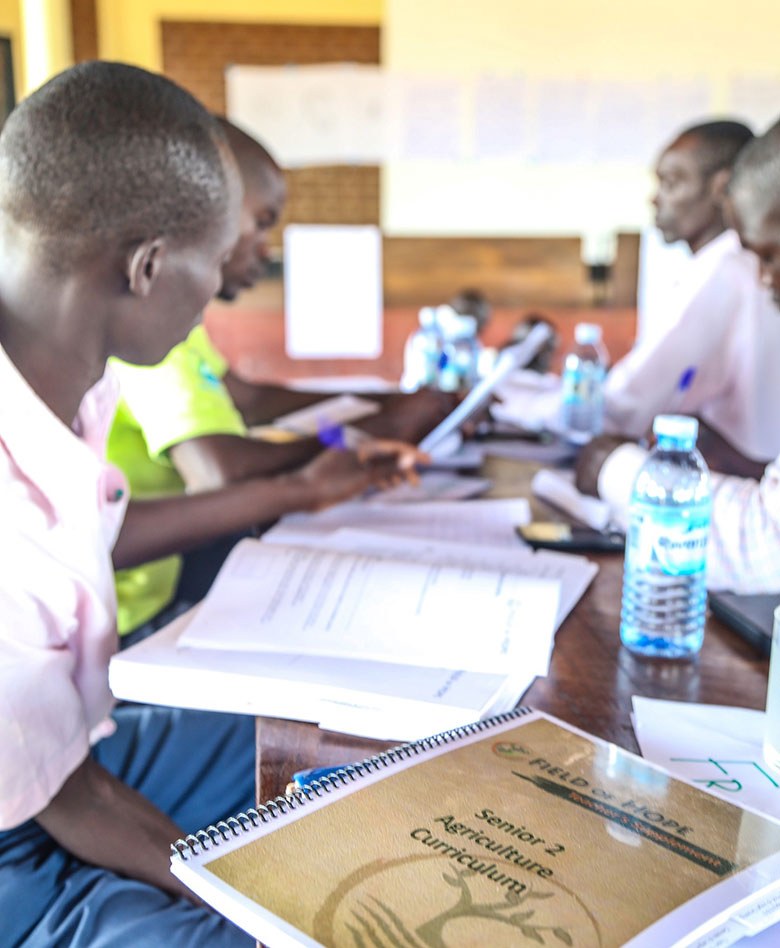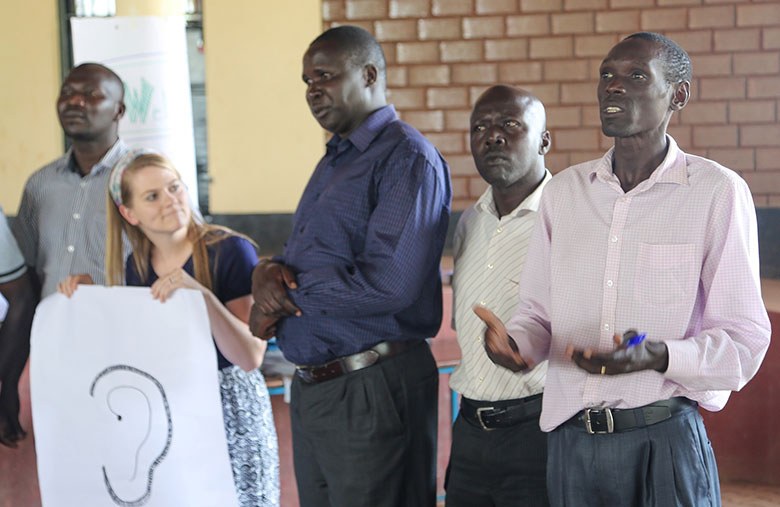Field of Hope: The Curriculum Cycle


The team arrived in time to be greeted by the rains. If you haven’t experienced the African rains, there truly is nothing quite like watching the clouds roll over the Nile River, seeing lightning crack across a sky with zero light pollution, and listening to the drops pound on an old tin roof.
Like so many things in nature (and agriculture for that matter), the water cycle is just that — cyclical.
The rains will come.
They will nourish.
They will gather.
They will evaporate, build back up, and come again.
The team in Uganda is both wrapping up the curriculum development cycle and beginning a new cycle just like the rains.
We will come.
We will nourish.
We will gather insight.
We will head back home to build, but we will come again.
This trip has two goals:

Deliver and train teachers on the second year of the Ugandan agriculture lesson plans

Collect content from teachers to begin development of the third year of the plans
 This week, the team is delivering 482 pages of lesson plans, experience guides, quizzes, essay questions, and supplemental materials designed to equip Ugandan teachers with the resources to teach agriculture through experiential learning. The team is conducting a two-and-a-half day training that will set these teachers up for success during the next school year which begins in one month.
This week, the team is delivering 482 pages of lesson plans, experience guides, quizzes, essay questions, and supplemental materials designed to equip Ugandan teachers with the resources to teach agriculture through experiential learning. The team is conducting a two-and-a-half day training that will set these teachers up for success during the next school year which begins in one month.
The training marks the end of developing the Senior 2 lesson plans but also the beginning of developing the Senior 3 lesson plans. Here’s a glimpse into our year-long process.
Template Design — March and April 2017 (one-time step)
- Lesson Plan Design — Vivayic reviewed the lesson plan design of other Ugandan subjects then used those examples to develop template options. Four template options were reviewed by native Ugandan teachers and professors as well as Western teachers who had taught in East Africa. The template went through multiple iterations until we determined the layout, icons, and language to be used during the writing phase. The layout has since been reviewed and approved by the National Curriculum Development Centre (NCDC), as it closely mirrors the layout and design of other NCDC materials.
Essential Knowledge — January through June
- Content Collection — While in Uganda, the Vivayic team collects content from multiple Ugandan teachers and government officials at the NCDC. Usually this means snapping photos of handwritten content the teacher has been using for years. These first-hand sources are critical for our U.S.-based team to ensure that we have cultural context.
- Crosswalk to the Ugandan Syllabus — Vivayic aligns the content collected to the Ugandan agriculture syllabus then identifies and fills in gaps to ensure all objectives are met.
- Essential Knowledge Profiles Developed — The team then builds what we call essential knowledge profiles (EKPs). These extensive documents get into the nitty gritty of the content. We aren’t yet focused on how to teach only what to teach. For example, if one of the objectives focuses on the breeds of poultry, then the breeds relevant to Uganda are identified along with breed characteristics, uses, and other information.
- Subject Matter Experts (SMEs) Review Content — The EKPs are sent to native Ugandan agriculture teachers and trainers for review. They review for gaps, cultural relevancy, and accuracy.
Design and Develop — June through November
- Write Modules — In June, once the content has been confirmed, Vivayic identifies how best to teach the content through blueprinting and storyboarding the lesson plans. Once we have identified the learning strategy, we begin the writing phase utilizing the entire team to develop 90 lessons.
- Review and Pilot — Lesson plans go through four rounds of reviews.
- Two rounds of internal feedback from Vivayic teammates — Focused on learning design.
- One round of feedback from Field of Hope staff, board members, Ugandan teachers, and trainers — Focused on cultural relevancy and accuracy. During this time, teachers have an opportunity to pilot lessons in their classrooms and provide feedback.
- One round of editorial review — Vivayic’s editor reviews the lesson plans for grammar and consistency using British English and with an eye toward Ugandan cultural norms.
- Implement Feedback and Deliver — Vivayic implements feedback after each review. Together, Field of Hope and Vivayic package, print, and deliver the curriculum to teachers.
Support Utilization — December and January
- Train the Trainer — Vivayic and Field of Hope conduct an optional teacher training with the goals of 1) equipping teachers to use an experiential approach to teaching and 2) allowing them to practice delivering the lesson plans.
 The rains are welcomed by Ugandans in January, as it is their hottest — and usually driest — month of the year. The dry ground is ready to soak up the precious resource. Our desire is for our curriculum resources to nourish Ugandan agriculturalists as the African rains nourish their crops.
The rains are welcomed by Ugandans in January, as it is their hottest — and usually driest — month of the year. The dry ground is ready to soak up the precious resource. Our desire is for our curriculum resources to nourish Ugandan agriculturalists as the African rains nourish their crops.
